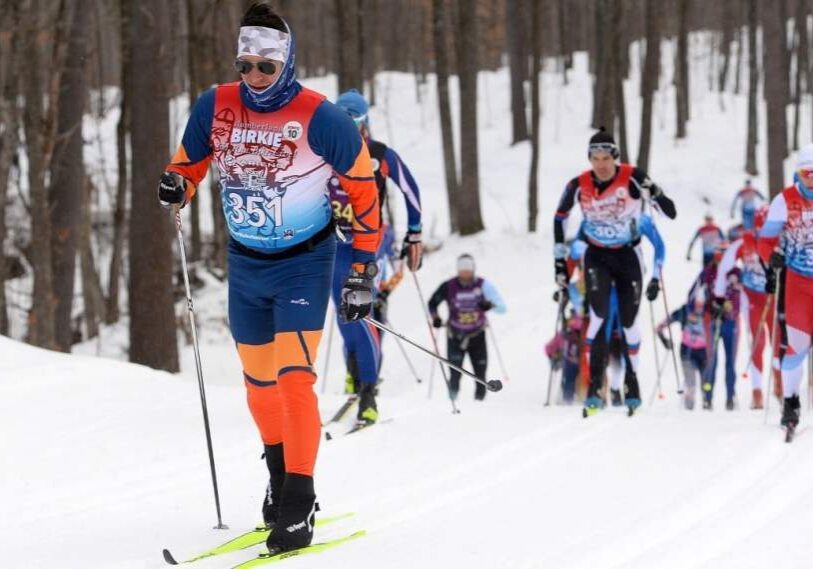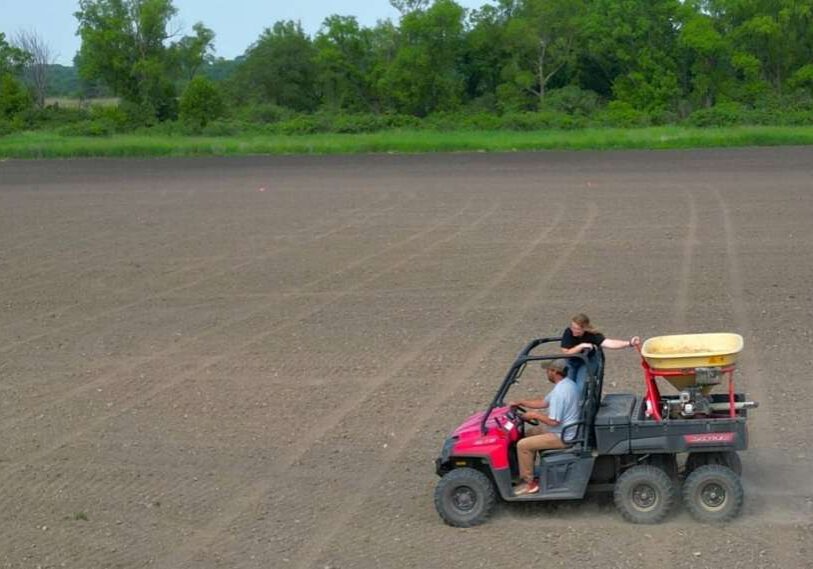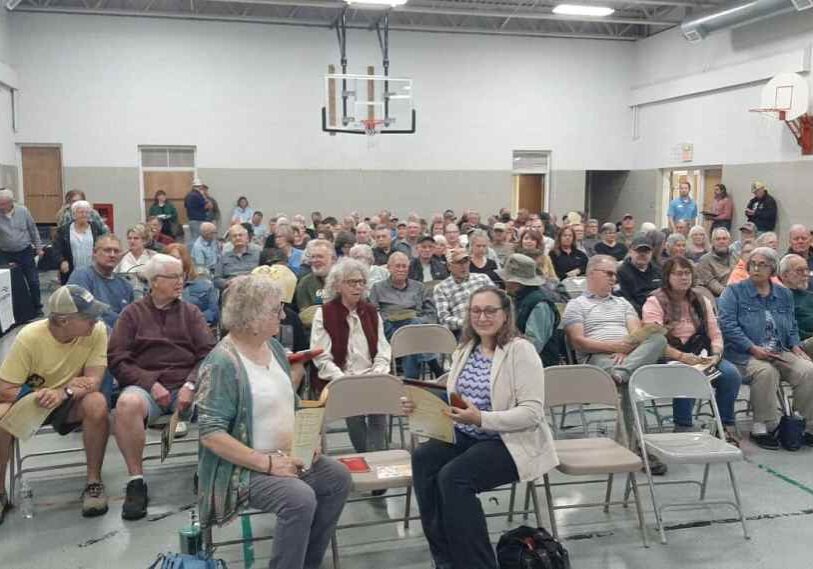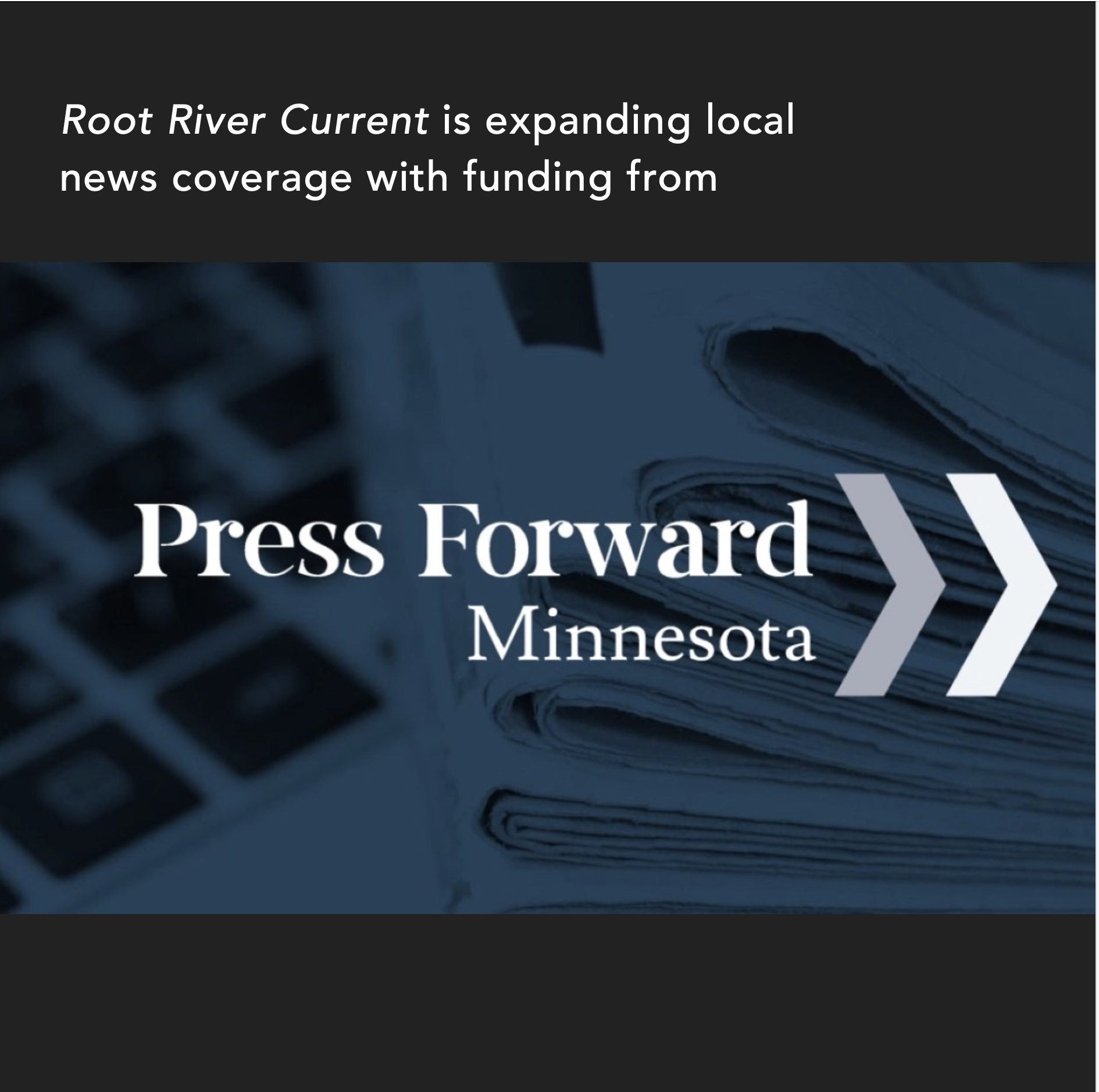Finding a Better Way, One Generation to the Next

Editor’s note: This is one in a series of stories from Smarter Together featuring southeast Minnesota farmers and landowners who are innovating to achieve their goals for land stewardship, their families and communities.
WINONA COUNTY — Phil Schwantz plants and harvests the same fields his father and grandfathers did before him, but like them, he does it his way. Those fields include his home farm, which his father and paternal grandfather operated, and a second farm his maternal grandfather owned. With different tools and an ever-increasing appreciation for soil health and soil and water conservation, he is improving the fields for future generations. In 2017 he became certified for the Minnesota Agricultural Water Quality Certification Program (MAWQCP). His efforts have earned him a Climate Smart Farm Endorsement through the MAWQCP.
The Climate Smart Farm Endorsement recognizes farmers like Schwantz, who implement practices that reduce greenhouse gas emissions and sequester carbon. It also creates an opportunity to learn more about climate smart practices and explore those that qualify for agricultural carbon markets. For Schwantz, his ever-evolving practices reflect his heritage of adopting leading edge technologies for the time.

Over decades, Phil Schwantz has improved soil health and productivity on his farm by innovating to retain water and nutrients and increase biological activity in the soil. His evolving practices reflect a family heritage of adopting leading edge technologies for the time. (Photo submitted by Phil Schwantz)
“My grandfather farmed the fields in blocks, using a check planter that produced a checkerboard pattern of plants to maximize light and nutrients for each corn plant,” says Schwantz. “When my father took over the farm, he put the fields into contour strips to better conserve the soil and prevent erosion. However, like his father, he still clean-plowed fields before planting a crop.”
Experiments with tillage
Schwantz has improved on his dad’s efforts, significantly reducing tillage and planting cover crops. “When my brother and I started farming in the late 1970s, we transitioned to chisel plowing and leaving residue on the surface,” he recalls. “We were interested in eliminating tillage, but that was difficult to do with our dairy herd.”
Without manure storage, the dairy required daily spreading of manure. That, in turn, required at least minimum tillage to incorporate the manure before planting. The upside to the dairy cows was their need for forage crops. Hay fields had been key to helping reduce erosion on the land during previous generations and continue to do so today, even though the dairy cows are gone.
“We sold the dairy herd in 2002 and went to more row crops with fewer and larger strips and added soybeans to the rotation,” he says. “We also reduced tillage even more.”

Fresh growth appears ten days after interseeding into an alfalfa field on the Schwantz farm. (Photo submitted by Phil Schwantz)
Over the next two decades, Schwantz shifted to mostly no-till. He uses minimal soil disturbance, vertical tillage where needed and plants cover crops on corn and soybean stubble. In addition to erosion control and slowing water runoff, these practices increase soil organic matter and improve soil health. Adding biomass to the soil surface and below-ground, also sequesters carbon in the soil. Maintaining plant cover throughout the growing season, combined with reduced tillage, also has a major impact on biological activity in the soil, building and sequestering nutrients for the following year’s crop
Sequestering nutrients
Keeping nutrients where they are needed has been a goal for more than 20 years. That’s how long Schwantz has used nitrification inhibitors to reduce leaching and nitrous oxide emissions of applied nitrogen (N). While initiated to preserve N for the growing crop and as needed release, he now recognizes the role of leached N in ground and surface water degradation and the role of nitrous oxide as a potent greenhouse gas.

The Schwantz farm is certified in the Minnesota Agricultural Water Quality Certification Program, with an additional Climate Smart Farm Endorsement. These certifications provide regulatory certainty, create opportunities to learn and share, and recognize practices that sequester carbon and reduce greenhouse gas emissions. (Photo submitted by Phil Schwantz)
Another important part of his soil and water conservation is maintaining about 30-40 percent of the fields in alfalfa. This is, in part, to feed the 40 to 50 beef steers he finishes out each year.
“I utilize the small grain I produce in the cattle ration and use the straw from the grain for bedding,” says Schwantz.
The larger part of his hay crop is purchased by a dairy farmer and a larger beef producer. A side benefit of renting hay ground to the dairy farmer is injection of dairy manure to Schwantz’s fields. The dairy manure along with manure and bedding from his feedlot reduces the need for commercial fertilizer and, equally important, builds soil health. Like soil conservation, he approaches soil health from multiple directions, some of which overlap.
Innovative agronomic partner
“We work with Midwestern BioAg, which has more of a biological approach to fertilizer programs with ingredients that are friendly to the soil biology,” says Schwantz. “We also added cover crops to our row-crop fields or when hay strips need to be terminated.”
Schwantz credits Gary Zimmer, founder of Midwestern BioAg, for introducing him to many of the practices he follows. “Gary emphasized low salt fertilizers and micronutrients homogenized into every fertilizer granule,” says Schwantz. “It wasn’t the cheapest, but it made sense. He was talking about cover crops, soil biology and keeping fields green 40 years ago. When I began experimenting with them, like the fertilizer, these practices made sense. At the time they weren’t popular, but over time there is a better understanding and agreement with them.”
While Schwantz is committed to cover crops and no-till, he is quick to admit that no practice is perfect, nor does it work every time. One year’s success with multi-species cover crops can fail the following year due to less moisture.
Similarly, no-till has not been the silver bullet for soil conservation Schwantz had hoped for. “Yield monitoring identifies spots in fields where the yield drops, and soil probes tell us the old hardpan from decades of plowing still needs to be dealt with,” he says. “Years of no-till and cover crops might fix the problem areas. A faster alternative is precision minimum tillage. We are exchanging the aggressive shovels on our ripper for points that will cut a slot for water to penetrate. It will do more of a no-till ripping, which we think will be better.”
Benefits
Neither disappointment has dissuaded him from cover crops or eliminating tillage when possible. For one thing, he is already seeing signs of benefits received from the healthier soils, even as the climate shifts.

During a cold week in late April 2023, rye (left) greens up and grows in the chill, and an alfalfa field waits to come out of dormancy (right). (Photo submitted by Phil Schwantz)
“Rains are less frequent, but more violent,” he says. “And yet, our farm ponds don’t fill up with runoff like they used to. The fields are holding more moisture due to better infiltration.”
Schwantz continues his search for new ways to improve soil health and through that protect soil and water quality and farm profits. This year he plans to mix biological supplements with his fertilizer with a goal of reducing his application of nitrogen.
“One of the things I want to do is test the soil for microbial activity,” says Schwantz. “I would like to better gauge our different practices to see if we are gaining ground or not.”
At 62, gaining ground on his 3rd generation farm is as important to him as ever. His 10- and 15-year-old granddaughters have let him know, they intend to pick up where he lets off.
“If they do, they will do it their way,” says Schwantz.
Phil Schwant’s agronomic decisions are influenced by Gary Zimmer, author of The Biological Farmer, The Biological Farmer (Second Edition), and Advancing Biological Farming. Smarter Together stories feature southeast Minnesota farmers and landowners who are innovating with partners across a variety of landscapes to achieve their own goals for land stewardship, their families and communities. The project began as a conversation with retail crop advisors who were looking for ways to support customers, increase nutrient efficiency, and address water quality concerns. The project is administered by Winona and Wabasha County Soil & Water Conservation Districts; produced by NewGround, an independent strategic communications group; and funded by Minnesota Pollution Control Agency and Minnesota’s Clean Water Land and Legacy Fund.






